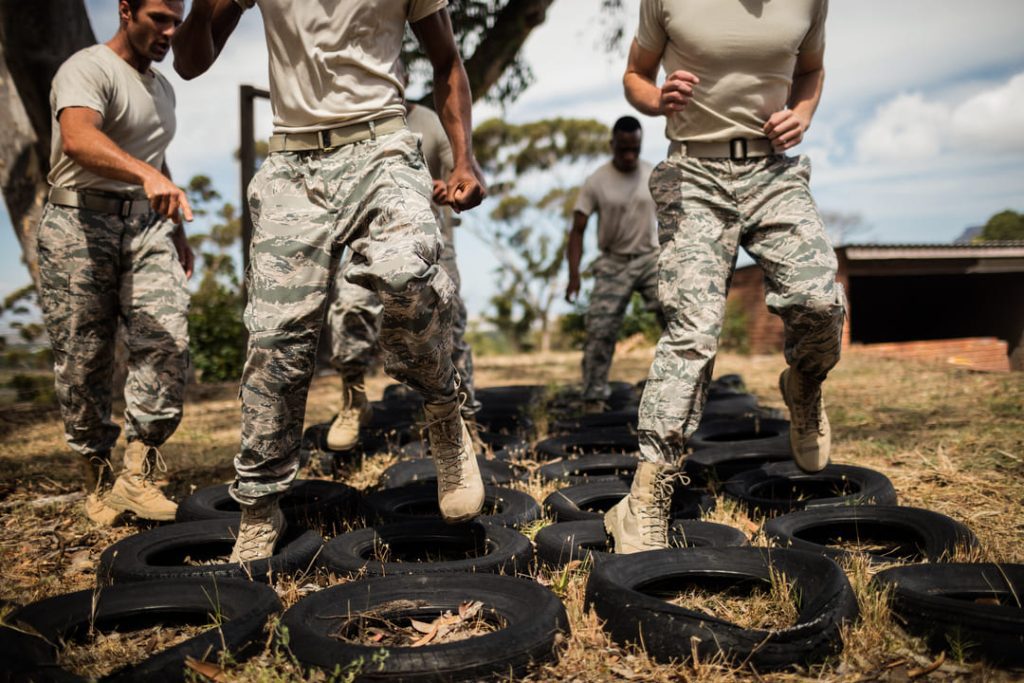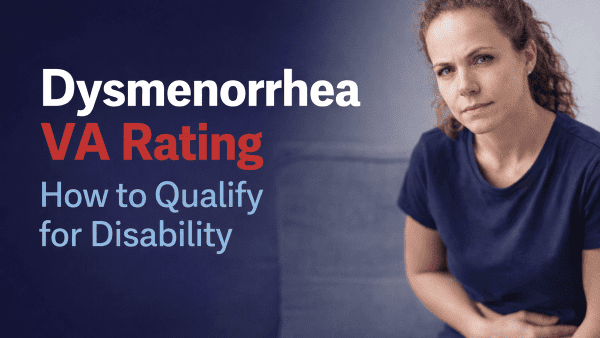Looking for Expert-Level VA Claim Answers?📱Call Us Now! 737-295-2226
When people think of VA disabilities, they usually think first of battlefield injuries. But there’s far more to VA disability than this.
When you sign up for the military, you are a 24/7 employee, ready to answer your nation’s call at a moment’s notice.
Whether or not you are injured while in uniform, out of uniform, down range, or in basic training, it doesn’t matter.
In this post we’ll take a look at VA benefits for veterans injured in basic training. We’ll also look at boot camp injuries and aggravations, preexisting conditions, and more.
Table of Contents
Summary of Key Points
- Eligibility for VA Benefits: Injuries that occur during basic training may qualify you for VA disability benefits, even if you were discharged in entry-level status.
- Establishing Service Connection: You must demonstrate a current medical condition linked to your service, which may include injuries aggravated by military activities.
- Medical Evidence: Documentation, including a medical diagnosis and nexus, is essential for supporting your claim.
- Secondary Conditions: If your service-connected injury leads to additional VA-rateable conditions, you can file for secondary service connections to potentially increase your VA rating.

Injured in Basic Training VA Benefits
If you were an active duty military member when the injury or illness occurred or was aggravated, even if that was during Basic Training, you may be eligible for VA benefits.
Can I Get VA Disability Benefits if Injured in Boot Camp?
Yes. During your initial entry training, you are in what’s called “entry-level status.” This means you’ve served less than 180 days.
Getting injured while in entry level status does not affect your eligibility for VA benefits.
Even if you were discharged entirely from the military while in entry-level status, you could still be eligible for VA benefits as long as your discharge was under Other Than Dishonorable Conditions.
How to Get VA Disability Benefits if Injured in Boot Camp
The first thing you need to do is establish service connection. This requires you to show:
- That you have a current condition (i.e., illness or injury)
- That you served on active duty, active duty for training, or inactive duty training
You must also show at least one of the following:
- That you got sick or were injured while serving in the military (and can link this illness or injury to your current condition) or
- That you got sick or were injured before joining the military (and can show that your military service worsened your illness or injury) or
- Your condition is connected to your active-duty service but didn’t appear until after you ended your service
In order to prove service connection, you will need a medical diagnosis. You may already have a diagnosis in your medical records. If not, talk to your medical provider to get an appropriate diagnosis.
You should be prepared to show medical evidence that your injury is service-connected. This can come from your military service records.
You can also request a nexus letter from a licensed medical provider. This letter could use wording to show that it is “at least as likely as not” that an in-service event caused or worsened your current medical condition.
Life Impact
The VA will also want to know how your service-connected injury has negatively affected your life.
Your medical records can be helpful in showing how your condition limits your mobility, increases your pain, or causes other symptoms.
You can also document specific evidence of how your life has become more difficult because of your condition.
For example, you might show that you are unable to work in your usual desk job due to your lower back pain and how your range of motion is limited, keeping you from performing simple tasks like tying your shoes or putting on your socks.
The more your condition negatively affects your life, the higher the rating percentage you could be awarded.

Why Are There So Many Injuries from Military PT?
While battle injuries are often the face of VA disabilities, non-battle injuries (NBIs) are a major cause of ongoing health problems among veterans.
In one 12-year study of veterans deployed to Iraq and Afghanistan, approximately one-third of injuries were NBIs. Among the leading causes of these NBIs were physical training (PT) and sports injuries.
Furthermore, a study of young men undergoing Army Infantry Basic Training showed that 37% had lower extremity training-related injuries. The most common of these injuries were muscle strains, sprains, and overuse knee conditions.
If your injuries began with PT, you’re not alone. Overuse injuries (like shin splints in boot camp) are not uncommon. Additionally, many veterans are suffering from the effects of years of military physical training.
“Isn’t PT supposed to be good for you?”
Yes, when executed according to your unique needs and abilities, but this doesn’t always happen.
Instead, PT often collides with a number of limitations:
- Group exercises that don’t serve the individual. A lot of PT is done as a unit. This can be motivating and build camaraderie, but it can also cause individual needs to be overlooked.
Exercise is not a one-size-fits-all pursuit. For example, a core routine may serve everyone well except those who have lower back issues.
- Excessive focus on running. The military loves their runs, and understandably so. Running is one of the most efficient ways to boost cardiovascular strength and stamina.
But too much running can do a world of damage. Tendons get overworked and inflamed, which leads to injuries like iliotibial (IT) band syndrome, patella tendonitis (pain in the knee cap), plantar fasciitis (pain on the bottom of the foot), Achilles tendonitis (pain from the calf to the heel bone), and shin splints.
Most people shouldn’t be running every day (unless they’re advanced runners), and some people shouldn’t be running at all based on previous injuries or anatomical issues.
Too much running is an open invitation for overuse injuries that can wreak havoc on your body for years to come.
- Unbalanced core workouts. Just as the military loves their runs, they also love their sit-ups.
Though most branches have dropped sit-ups from physical fitness testing requirements, they were the preferred measure of core strength for years.
Unfortunately, sit-ups aren’t a great indicator of true core strength, and they put damaging pressure on spinal discs. Soldiers often end up doing so many sit-ups that they over-work certain core muscles to the exclusion of other critical muscles, such as the transversus abdominis.
The result is imbalanced core muscles, which can lead to a poorly supported spine and unrelenting lower back pain.
- Unbalanced upper-body workouts. These injuries are similar to the sit-up injuries mentioned above. Military training often hyper-focuses on push-ups and pull-ups (both of which have historically been part of physical fitness testing requirements).
These exercises pump up the chest and lats but neglect other shoulder muscles (like rotators), which help stabilize the shoulder.
Pro sports teams are sticklers for working rotators because they understand the cost of neglecting them, but military PT routines frequently ignore them.
The result is injuries like shoulder impingement syndrome, full or partial dislocation, and rotator cuff tears.
- Too many ruck runs. Runs alone can cause problems, but you can supersize those problems with frequent “ruck marches” or “ruck runs” where soldiers put their heavy rucksacks on their backs and march or run for long distances.
Frequent ruck runs can be a body wrecker, stressing the lower and upper body and back.
- Tough guy/gal culture. Nobody wants to be the weak link in the military, and toughness is applauded by fellow soldiers and leaders.
As a result, many soldiers will tough out their PT, gritting their teeth through injuries that should have been treated long ago.
Even if soldiers do report their injuries and get a “profile” from their doctor, these profiles are often too short, meaning soldiers are thrown back into the mix before they have adequate physical therapy and time to heal.
- Lack of focus on flexibility, coordination, balance, injury prevention, or rehab. A rigorous PT program should be paired with all of the above, rather than an outsize focus on aerobic activity and muscle building.
Without a more holistic approach to PT, the door remains open for frequent injuries that can lead to lifelong disabilities and even spawn secondary disabilities.
What if my Boot Camp Injury is Tied to a Pre-Existing Condition?
Maybe you injured your back playing football in high school.
After joining the military, your back pain began to flare while doing exercises like pull-ups and sit-ups.
In this scenario, your military service didn’t cause your back injury, but it aggravated it, which could make you eligible for VA benefits.
You DESERVE a HIGHER VA rating.
Take advantage of a VA Claim Discovery Call with an experienced Team Member. Learn what you’ve been missing so you can FINALLY get the VA disability rating and compensation you’ve earned for your service.
My Boot Camp Injury has Caused More Health Problems. How Can I Increase My VA Disability Rating?
When a service-connected condition causes another condition–or worsens a pre-existing one–this is called a secondary condition.
Many veterans assume they can only get compensation for direct service-connected disabilities and miss opportunities to file a VA disability claim for secondary conditions.
Here’s an example of a secondary condition:
You have knee problems resulting from overuse during your years of physical training.
An unstable knee joint can send pressure downstream to your foot. Excess pressure on certain parts of your foot can cause your fascia (the band connecting your heel bone to your toes) to tear and stretch, resulting in plantar fasciitis.
You can open up a new VA claim and file for plantar fasciitis secondary to knee problems.
The VA may be able to issue you a combined rating that accounts for multiple disabilities and ultimately increases your overall VA disability rating.

What Happens if You are Medically Discharged From Basic Training?
If you’re medically discharged from basic training, it often means you were unable to meet the physical or mental requirements due to a medical condition. The process usually involves a medical evaluation to determine the extent of your condition and whether it can be treated (or accommodated).
Here are some key points about what happens:
- Medical Evaluation: You’ll undergo an assessment by military medical personnel to evaluate your condition. The injury’s severity and if it will affect your ability to continue training or serve in the military will determine next steps.
- Medical Treatment: The severity of your injury will determine treatment and can include rest, physical therapy, medication, or even surgery.
- Discharge Processing: If it’s determined that you cannot continue, you’ll enter the discharge process ((Physical Evaluation Board (PEB) or Medical Review Board (MRB)). This may involve paperwork and administrative procedures.
- Type of Discharge: Your discharge may be classified as “medical” or “unfit for duty,” and it might impact your eligibility for future service.
- Benefits: Depending on the circumstances, you may be eligible for certain benefits or medical care after discharge.
- Future Considerations: If you wish to join the military in the future, the specifics of your medical discharge may affect your eligibility.
Conclusion
Injuries sustained during basic training can have lasting impacts on your life. If you were injured in basic training VA benefits could make treatment of your injuries more manageable. Understanding your eligibility is the first step in getting the VA benefits and compensation you deserve.
Whether your injury is direct or a result of aggravation from service, navigating the VA claims process successfully can improve your quality of life and access to necessary medical care.
NEED MORE ASSISTANCE?
If you are one of the thousands of veterans whose lives are compromised by injuries from military physical training, you may still be eligible for up to a 100% VA disability rating.
We want to make sure you get the VA disability compensation and benefits you deserve.
Reach out and schedule your VA Claims Insider Discovery Call for more information on how to get what you deserve!

Clay Huston
Clay Huston is a former U.S. Army Reserves Blackhawk Pilot and officer. Clay enlisted in the Army in 2013 and was commissioned as a 2LT in 2017 after earning a business degree from the University of Illinois Champaign-Urbana.
Since separating from the military, Clay has pursued a career as a writer. He also runs the nonprofit notfatherless.org, which fundraises for Children’s Homes in Mexico.



